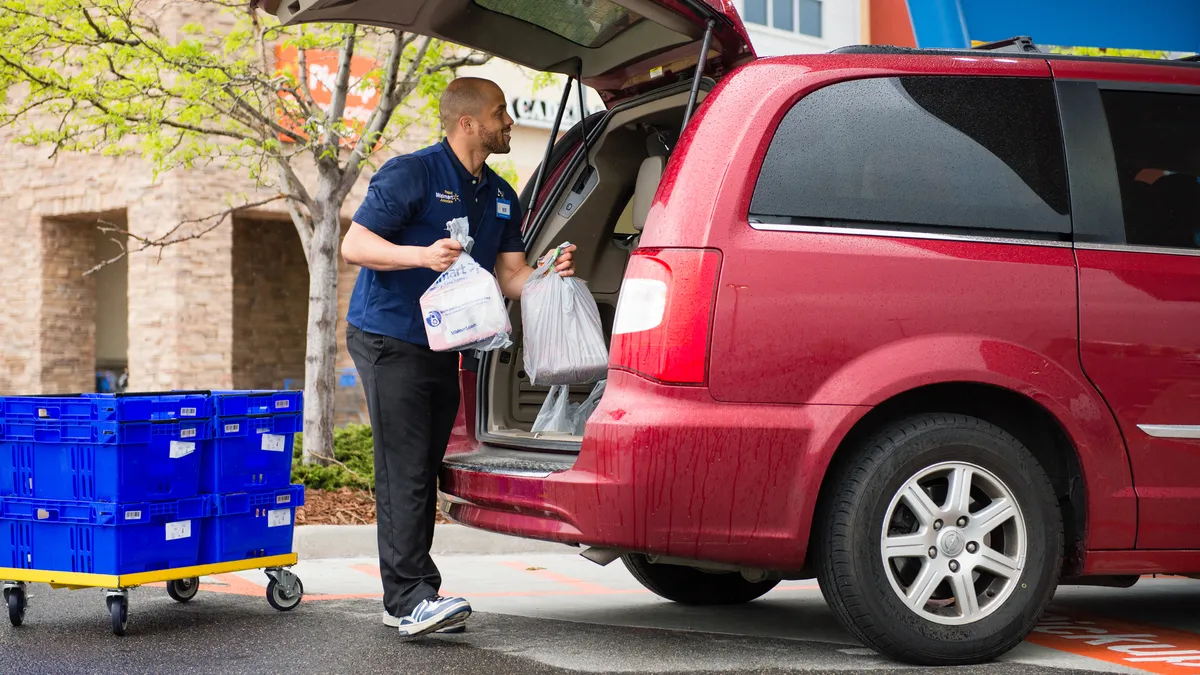Dive Brief:
- Retailers like Kroger and Walmart have spent a lot of money expanding their store pickup programs, but new data from InfoScout shows a majority of click-and-collect users – 57% – used the service just once in the past year, while 28% used it three or more times.
- Among the heaviest users of click and collect — those that used the serve 12 or more times in the past year — the majority (57%) are high-income, making $80,000 or more annually. Consumers aged 35 to 44 made up 29% of this group. Overall, InfoScout found that click-and-collect orders were 2.6 times as large as in-store orders — $119 compared to $47.
- According to InfoScout, 14.3% of omnichannel fast-moving consumer goods dollars are now spent online, versus 12% over the same period last year, 10.3% from 2016 and 7% from 2015. This growth is primarily from consumers making more online purchases versus bigger baskets or greater penetration.
Dive Insight:
Perhaps the biggest takeaway from InfoScout’s research is that consumers are becoming more comfortable ordering online as evidenced by their repeated visits, in addition to general growth within the channel. Additional new data from Rakuten Intelligence found that, in the 12 months ending March 2018, 46% of orders were through click and collect, up from just 18% two years ago.
Such a trajectory is even more impressive when considering that big players like Kroger and Walmart didn’t start testing the service until less than three years ago. But the runway for growth is still very long, especially in capturing more repeat visitors. Online shopping is projected to increase at 10 times the rate of in-store sales throughout the next five years.
For the time being, that digital crowd prefers click and collect versus delivery, indicating that consumers still like to have some ownership in their shopping journey and perhaps even pop into the store for last-minute purchases while they’re there. Grocers have an incentive here, too, as most impulse purchases happen in-store. Store pickup is also cheaper for supermarkets to operate, since consumers are the ones covering the last mile.
Kroger and Walmart have been the pace setters for click and collect, which – considering their nationwide footprint – is helpful in getting consumers up to speed on the technology. Whole Foods is just now jumping into the fray, with a 30-minute store pickup option now available in two markets. Smaller, regional grocers, meanwhile, are also offering store pickup but lack the promotional muscle of their larger competitors.
At the moment – with just 28% of consumers using click and collect three or more times – the investment may be hard to justify for smaller players. But Amazon, Kroger and Walmart are pushing the industry into an omnichannel era and providing some compelling case studies in the process. Matt Thompson, ClickList’s vice president, told Reuters that the service’s customers spend 40% to 60% more per order than average shoppers, for example. Kroger also earns better margins and fully controls the user experience, which can be crucial in gaining and retaining shoppers.
Walmart is also yielding success with its service and, to the benefit of its customers, offers it for free.
For many retailers, online selling has become an additional cost rather than a growth opportunity. However, the number of consumers shopping online is accelerating— the Food Marketing Institute and Nielsen project 70% penetration in as little as four years — and that narrative is changing, meaning grocers of all sizes have an opportunity to capture these shoppers and build sales. With more shoppers trying the online experience to see how it fits their lifestyle, grocers need to invest in store pickup, home delivery or both — or risk losing their customers to the competition.








